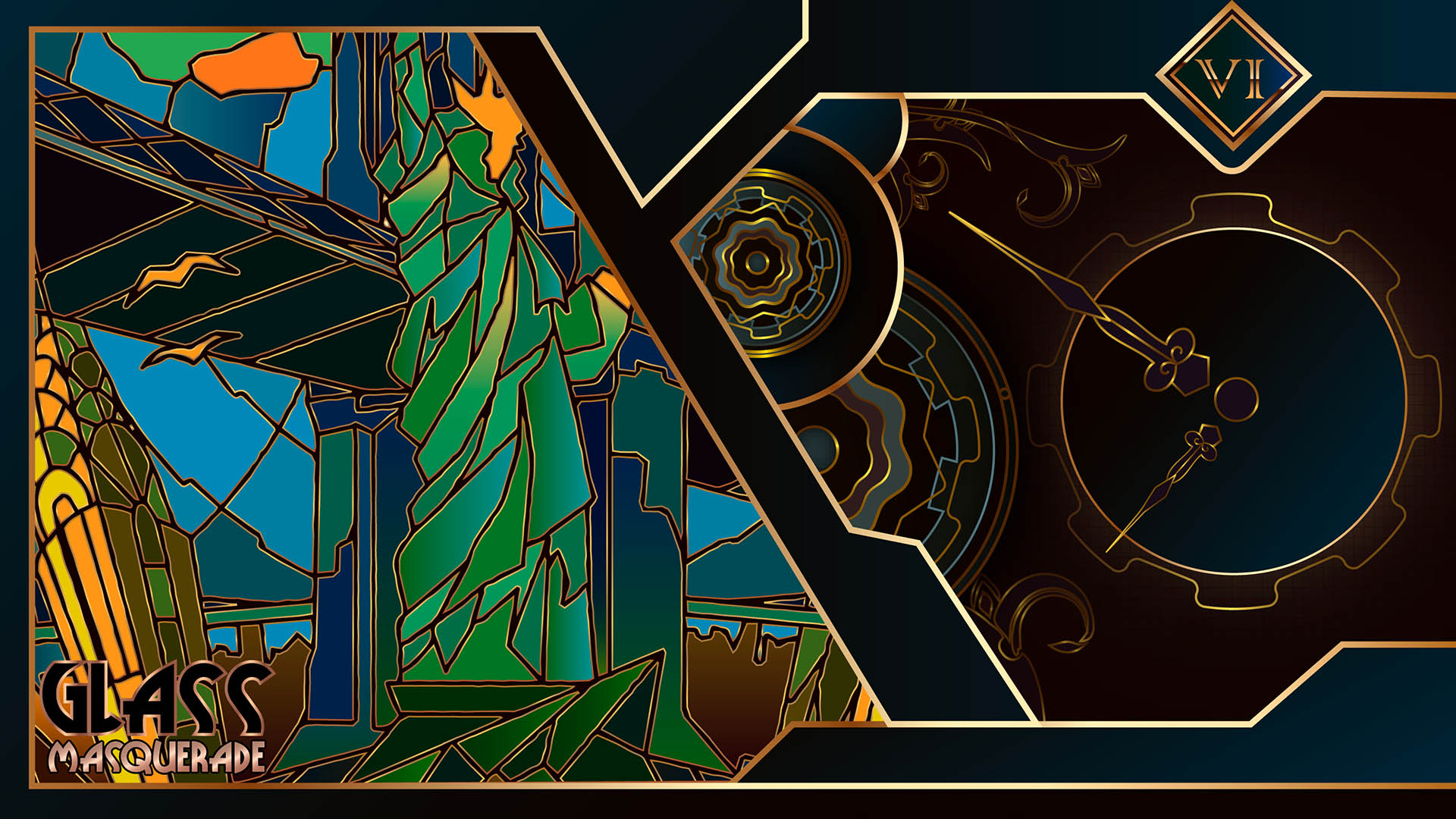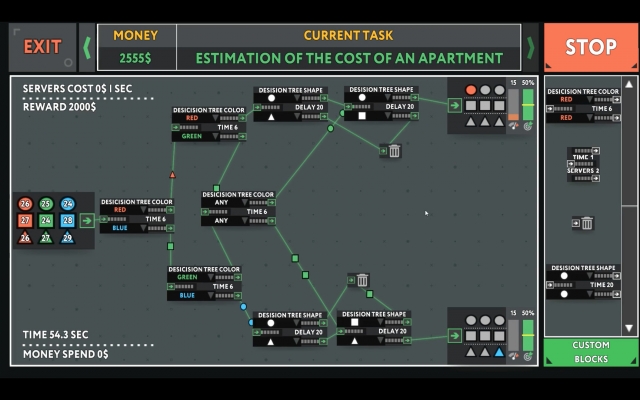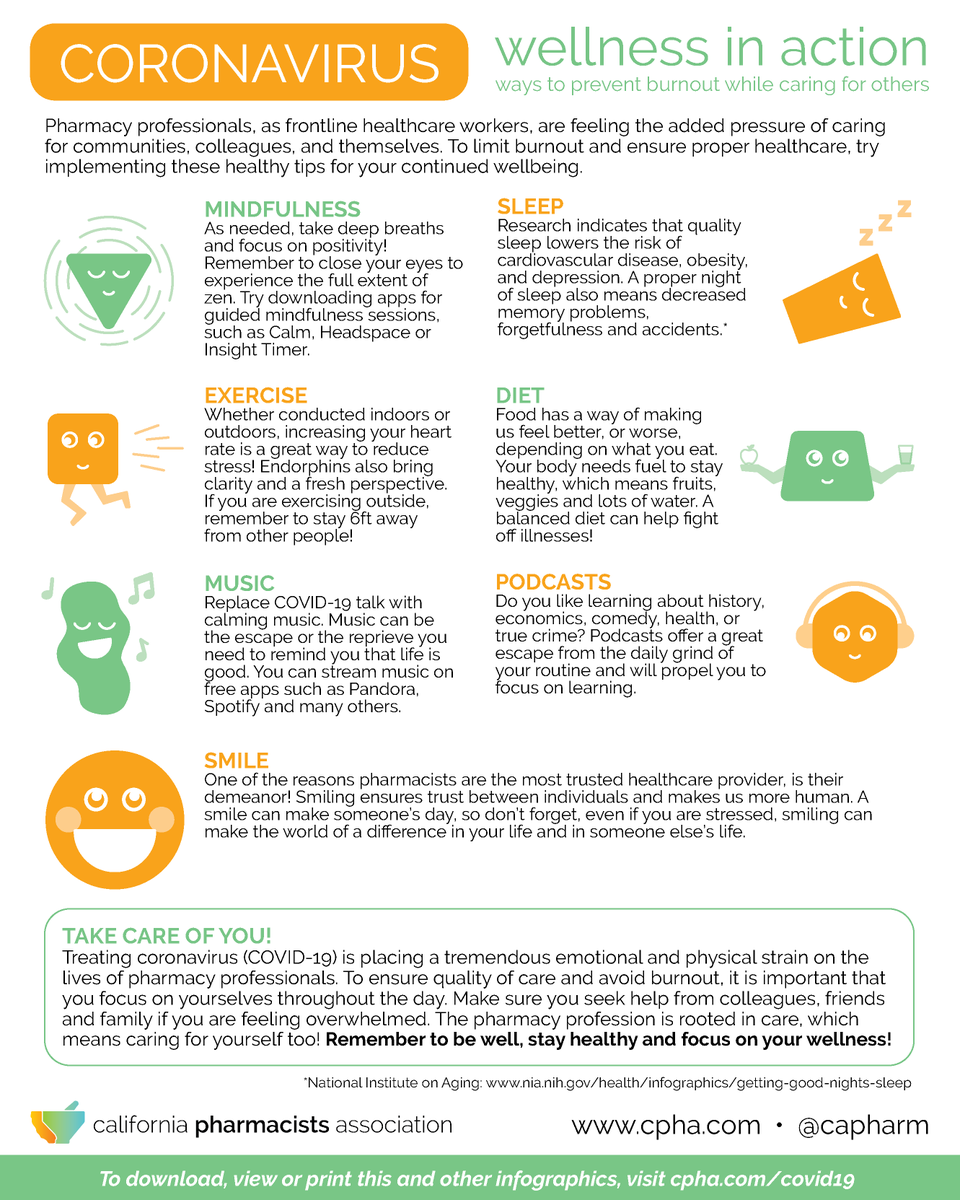While True: Learn() Soundtrack Download
No one would dispute the fact that the Internet has changed the music industry drastically over the past couple of decades. In fact, things continue to change at a rapid rate, and the music business is still struggling to keep up. From early issues like illegal downloading and music sharing sites (like the now-defunct Napster) to current disputes over music streaming services and how much the artists/labels should be paid in royalties, the Internet still seems to be raising more questions than it is answering.
Check this out on YouTube Music. A new music service with official albums, singles, videos, remixes, live performances and more for Android, iOS and desktop. For singer, an artistic holiday homecoming TEXARKANA — For soprano Nancy Curtis, singing in her hometown came naturally while attending church and learning music under her mother's guidance. Find free music mp3s to download and listen online. Scrobble while you listen and get recommendations on new music you’ll love, only from Last.fm. Christian accompaniment tracks for all your performance needs, on CD and MP3. Multi-key soundtracks for today's best worship, gospel, and hymns. Piano Kids – Music & Songs is a great fun music box created especially for kids and parents to learn to play musical instruments, wonderful songs, exploring different sounds and develop musical skills. Use your fingers to play colorful instruments such as kids xylophone, drum kit, piano, saxophone, trumpet, flute and electric guitar. Let your child make music on your phone or tablet.
That being said, not all the news is bad. While the Internet has made music more accessible to the public (and made it more difficult for artists to make money), it also happens to be an incredible tool that enables independent musicians to find a global audience without the help and backing of a major label. In short, the Internet has changed the music industry in both positive and negative ways. Let’s take a look at both sides.
THE BAD
While huge segments of the public are hailing the Internet era for making music easier and cheaper to obtain (or steal), the down side is that the business side of music is struggling to generate enough revenue because of the new technology. Most of the people who are part of making a record are paid in royalties, and anytime music changes hands without money being involved, those royalties can’t be paid—which is why so much has been done in recent years to try and reduce music piracy. Some progress has been made to curb this trend by offering easy, cheap downloads through outlets like iTunes and Amazon; this has helped because consumers can now purchase and download specific songs they like, rather than buy the whole album for just one song. A more recent development has been the emergence of Internet radio and streaming services like Spotify and Pandora, who offer either ad-based or paid subscription streaming of their music libraries. However, this new solution is currently still disputed by artists and labels because the current pay structures are still far less than if a consumer buys the music outright. These issues are far from being resolved.
The upshot is that in many ways the Internet has made it more difficult for artists (and their labels, when applicable) to make a decent amount of money from music sales. Many artists have resorted to playing live to subsidize their loss of income. While one day these problems may be resolved, a lot of questions still remain.
Glass Masquerade 2: Illusions Welcome to the Glass Masquerade sequel - an artistic puzzle game inspired by stained glass artisans and Wonderland depictions of the 20th century. You need to combine hidden glass pieces to solve every riddle and free yourself from a tangled dream.  Buy Glass Masquerade 2: Illusions - Temptations Puzzle Pack. $1.99 Add to Cart. About This Content Continue your adventure in the Glass Masquerade 2: Illusions with 9 new puzzles where fantasy arts meets pin-up motives in stained glass - FREE demo puzzle included! System Requirements. Buy Glass Masquerade 2: Illusions - Revelations Puzzle Pack. $1.99 Add to Cart. About This Content Continue your adventure in the Glass Masquerade 2: Illusions with 9 new puzzles inspired by H.Lovecraft themes - FREE demo puzzle.
Buy Glass Masquerade 2: Illusions - Temptations Puzzle Pack. $1.99 Add to Cart. About This Content Continue your adventure in the Glass Masquerade 2: Illusions with 9 new puzzles where fantasy arts meets pin-up motives in stained glass - FREE demo puzzle included! System Requirements. Buy Glass Masquerade 2: Illusions - Revelations Puzzle Pack. $1.99 Add to Cart. About This Content Continue your adventure in the Glass Masquerade 2: Illusions with 9 new puzzles inspired by H.Lovecraft themes - FREE demo puzzle.
THE GOOD
Almost paradoxically, the same Internet that has caused all the problems mentioned above can also be an artist’s best friend, particularly in the case of independent artists who aren’t part of the current “industry machine.” How is this possible? Simply put, the Internet allows people to connect with others all around the world. This enables certain smart musicians who are otherwise unknown to find their own audience without the aid or backing of a major label, virtually eliminating the need to be “discovered” by talent scouts or A&R reps. In some cases, this can result in attention from the labels themselves (many current worldwide recording artists today got their start putting their own stuff up on YouTube). In other cases, it simply means they can market and sell their own music to their audience without the need for label or radio promotion. The audience might not be as large as it would be otherwise—but neither does the artist have to share profits with the labels. The result is that music fans now have access to a lot of music they’d never hear otherwise, and many forward-thinking musicians have leveraged the Internet to carve out nice incomes for themselves without ever courting a record label.
So while the
Video is essential for teaching, training, sharing knowledge, and explaining concepts. No matter who your audience is, video helps them learn better.
Humans are hardwired to process visual content, but adding great visuals to a video is just half the battle.
Background music can add more interest to your videos, making them even more engaging and entertaining. The good news is that adding music to videos is pretty simple.
How do you add music to a video? Where can you find music? Read more to learn how to add music to a video.
1. How do I add music to a video?
2. How do I choose the right music for a video?
3. Where can I find music for a video?
How do I add music to a video?
It’s pretty simple to add music to a video. In this section, we’ll assume you have the music file you want to use, but later in this article we’ll share tips on where you can find music for your videos.
In fact, it’ll probably take you more time to choose your music than it will to actually add it to your video.
I use Camtasia to create and edit all my videos.
Want to add music to a video?
Download a free trial of Camtasia to add any music track into your video.
Step 1: Open your video
This may seem like a no-brainer, but I wanted to be thorough. In your preferred video editor, open the video project to which you want to add music.

Step 2: Import your media
In Camtasia, there are several ways to import video and audio files into your Media Bin. You can select Media from the menu, right-click in the bin, and select Import Media from the menu.
Or, you can choose File > Import > Media from the menu.
If you’re into shortcuts and hotkeys, you can choose CMD+I.
No matter which method you choose, navigate to the file you want to import, select it, and choose Import.
Note: You can also find music from TechSmith Assets for Camtasia in the Libraries folder. More about that later!
Step 3: Add your media to the timeline
Once you’ve imported your file, find it in the media bin, click on it, then drag and drop it to the timeline. You can add it to a new track or add it to an existing track depending on your needs. I typically add things to new tracks by default so they’re easier to find later.
If no empty track is available, Camtasia automatically creates a new track if you drag your file to the open area above the timeline.
Step 4: Adjust the audio to fit your needs
Here’s where you’ll need to make some decisions (if you haven’t made them already). Do you want your music to run through your whole video? Is it just for the intro or the outro?
For this example, let’s assume that we want to have the audio run throughout the entire video. Since there will be narration, we’ll want to make sure the music isn’t so loud that it makes the narration difficult to hear or understand.
When you select the audio track in the timeline, a line with shading will appear. To adjust the volume, you can click on the line and drag it up or down to the desired level. The waveform in the track grows and shrinks as you adjust the volume up and down, letting you know that the volume has been adjusted.
In the Audio Effects menu, there are additional options for adjusting audio. For example, adding a Fade Out at the end of your video clip can help avoid a potentially jarring abrupt ending.
Now that you know how to add music to a video, try playing around with it the next time you create a video. These were just a few basic steps to get you started, but there are a lot of other ways to edit audio to fit your needs.
Why should I add music to my video?
First, let’s admit that not all videos need music. Quick screencasts to show a colleague how to log into the new HR software or how to access their archived emails probably don’t need a soundtrack.
But, if you’re going to put something out for public consumption, it’s likely a little music can help make the video more engaging. Even if you just put a little bit at the beginning and end of your video, it helps make your video more interesting.
In fact, nearly 50% of the videos identified in our research Video Viewer Habits, Trends, And Statistics you Need to Know as being “great” had background music.
That’s a pretty strong indicator that music can add something special to your video.
How do I choose the right music for a video?
There’s a difference between adding music and adding the right music. Before you choose your music, think about what type of video you’re creating. For a video showing software or product features, you’ll probably want something upbeat and positive.
You want your viewers to feel good when they’re seeing your product. Other types of videos may need something more somber. Who can forget the various animal rescue commercials that are all over our TVs?
They pair sad, slow music with photos of sad-looking animals to compound the experience and — they hope — make us more likely to open our wallets to donate.
Not convinced yet? Trying imagining one of those rad videos of skateboarders thrashing out in a skate park with pan flute music instead of grungy guitars.
The right music enhances the experience for your viewers, while the wrong music can send the wrong message entirely.
Where can I find music for a video?
How can finding music be a challenge? I mean, music is everywhere, right? I have 70 GB of music on my iPhone right now. I’ll just use some of that music.
Wouldn’t it be nice if it were that easy?
Unfortunately, most of the music you own is effectively off-limits. That music is copyrighted (owned by someone else) and, if you use it, you’ll owe the copyright owner money (called “royalties”) for every time someone views your video.
Ever wonder why restaurants always seem to have their own birthday song rather than just singing “Happy Birthday To You” when it’s your birthday? Same reason. Someone actually owned the rights to that song until 2016 and restaurants would have had to pay royalties every time it was sung in their restaurants.
So where do you find the music you can use? Well, unless you want to compose your own music, the easiest answer lies in royalty-free music.
TechSmith Assets
There are a number of ways to find royalty-free music, but your best bet could be to start with TechSmith Assets for Camtasia.
If you use Camtasia as your video editor, TechSmith Assets for Camtasia is a no-brainer. You can get a few options for free, or pay a yearly subscription to get full access to the library.
It comes full of videos, images, and audio to enhance your videos.
For this instance, however, we’ll focus on music.
Once you head over to the music section, you’ll see a wide variety of tracks to choose from. You can sort by mood and by genre.
Best of all, it lets you directly open your song in Camtasia or download it to your machine.
Free music options
Some royalty-free music is truly free. There are a number of sites that offer music you can simply download and use as you wish (though often for non-commercial purposes, so be sure to read the user agreement).
Free music sites will also likely have a limited selection so you may have trouble finding exactly what you’re looking for, or the music may not be as good as you prefer.
YouTube actually has a nice sound effect and free music library for you to choose from.
That said, I have used free music on a number of occasions and been pleased with the result.
Commercial options
For most commercial purposes, such as product overviews, customer stories, etc., though, your best bet is a premium royalty-free music site. While the music won’t be free, it’s typically inexpensive, and you’ll have a wider range of high-quality music to choose from.
Premium Beat is a popular choice (and one I’ve used myself), but there are many other premium royalty-free music sites out there, as well.
Look for more on audio in future blog posts, or check out these great blog posts for more information!
P.S. The techniques above work for adding any type of audio to a video, not just music tracks. Whether you’re adding narration, sound effects, interviews, or other types of audio. Camtasia makes it easy to add audio to a video.
P.P.S. Remember that not everyone who consumes your video content can hear it. People who are deaf or hard of hearing — or who may choose to watch your video without sound — also need a way to consume the content without relying on audio.
So, be sure to include captions with all your videos. And, if you include a music file, the captions should note that, as well.
Is adding music to a video easy?Yes! With Camtasia adding music to a video can be as easy as a few steps. Just drag and drop and you’re ready to go!
Where can I find music to add to my video?While True: Learn() Soundtrack Download Music
There are a number of good options for finding royalty-free music to add to your videos. TechSmith Assets for Camtasia has a number of options that are totally free to use for Camtasia users. Additionally, the free music library on YouTube, or paid services such as Premium Beats are best bets.
Why should I add music to my video?Music, even if only used at the beginning and end of your videos, can add another degree of interest and provide a more engaging experience for your viewers.
How do I choose music for my video?
Know your audience and their expectations, as well as the type of video you’re producing. An instructional video intended for senior citizens will likely have different music than a rad skateboard video.
While True: Learn() Soundtrack Download Free
Want to add music to a video?
Download a free trial of Camtasia to add any music track into your video.
Editor’s Note: This post was originally published in October 2017 and has since been updated for accuracy and comprehensiveness.
While True: Learn() Soundtrack Download Free
Related Posts:
